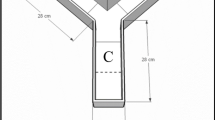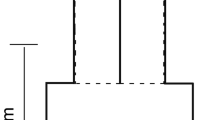Abstract
The carnivorous nudibranchRoboastra tigris preys preferentially upon two nudibranchs,Tambja abdere andT. eliora, that in turn feed upon the bryozoanSessibugula translucens. All four organisms contain tambjamines A–D (I–IV) that were shown to be fish feeding inhibitors. When attacked byRoboastra, T. abdere secretes a distasteful mucus containing a total of 3 mg of the tambjamines that sometimes causes theRoboastra to break off the attack. Under similar circumstancesT. eliora attempts to swim away; it presumably contains insufficient of the tambjamines to deterRoboastra. Roboastra follows the slime trail of nudibranchs using contact chemoreception and reverses direction when the trail is broken. The slime trail ofT. abdere contains low concentrations of the tambjamines. In Y-maze experiments,T. eliora was attracted towards seawater containingS. translucens and seawater containing 10−10 M tambjamines A and B (1∶1) but was repelled by seawater containing > 10−8 M tambjamines A and B. At higher concentrations the mixture of tambjamines may be recognized as an alarm pheromone.
Similar content being viewed by others
References
Atema, J., andStenzler, D. 1977. Alarm substance of the marine and mud snail,Nassarius obsoletus: Biological characterization and possible evolution.J. Chem. Ecol. 3:173–187.
Carté, B., andFaulkner, D.J. 1983. Defensive metabolites from three nembrothid nudibranchs.J. Org. Chem. 48:2314–2318.
Davenport, D. 1950. Studies in the physiology of commensalism. 1. The polynoid genusArctonoë.Biol. Bull. 98:81–93.
Davenport, D., andHickok, J.R. 1951. Studies in the physiology of commensalism. 2. The polynoid generaArctonoë andHalosydna.Biol. Bull. 100:71–83.
Farmer, W.M. 1978.Tambja andRoboastra (Mollusca: Opisthobranchia) from the Gulf of California and Galapagos Islands.Veliger 20:375–385.
Faulkner, D.J., andGhiselin, M.T. 1983. Chemical defense and evolutionary ecology of dorid nudibranchs and some other opisthobranch gastropods.Mar. Ecol. Prog. Ser. 13:295–301.
Paine, R.T. 1963. Food recognition and predation on opisthobranchs byNavanax inermis (Gastropoda: Opisthobranchia).Veliger 6:1–9.
Schulte, G.R., andScheuer, P.J. 1982. Defense allomones of some marine mollusks.Tetrahedron 38:1857–1863.
Thompson, J.E., Walker, R.P., Wratten, S.J., andFaulkner, D.J. 1982. A chemical defense mechanism for the nudibranchCadlina luteomarginata.Tetrahedron 38:1865–1873.
Tumlinson, J.H., Silverstein, R.M., Moser, J.C., Brownlee, R.G., andRuth, J.M. 1971. Identification of the trail pheromone of a leaf-cutting ant,Atta texana.Nature 234:348–349.
Author information
Authors and Affiliations
Rights and permissions
About this article
Cite this article
Carté, B., Faulkner, D.J. Role of secondary metabolites in feeding associations between a predatory nudibranch, two grazing nudibranchs, and a bryozoan. J Chem Ecol 12, 795–804 (1986). https://doi.org/10.1007/BF01012111
Received:
Accepted:
Issue Date:
DOI: https://doi.org/10.1007/BF01012111




